Waterstudio.NL sponsors girls soccer team
Waterstudio.NL sponsors the girls indoor soccer team of the TUDelft University.
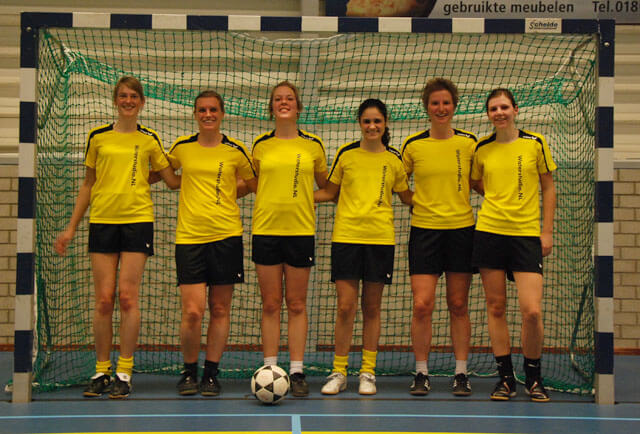
Waterstudio.NL sponsors the girls indoor soccer team of the TUDelft University.

Waterstudio.NL was granted the Permit for the development of 68 recreational watervillas in the North of The Netherlands
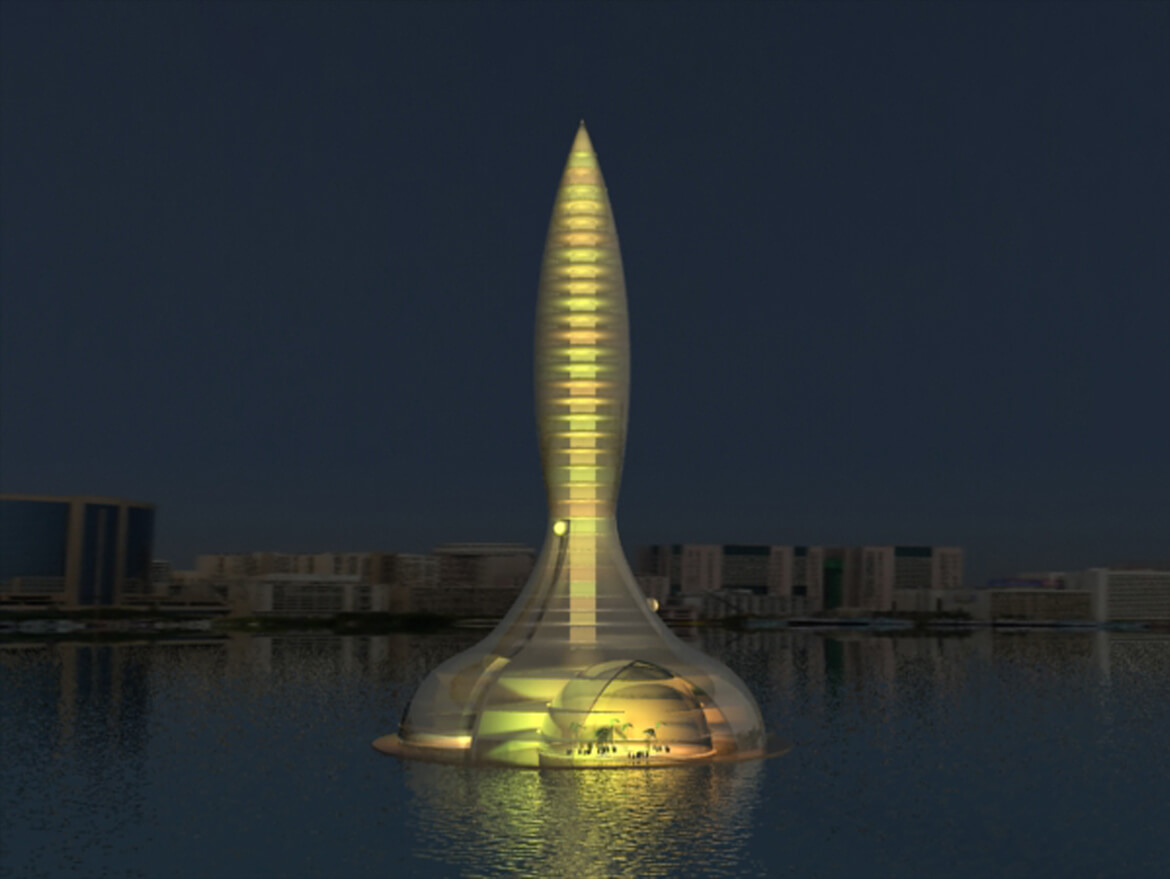
Building floating constructions Written by Architecture + Design
The first two watervillas waterstudio designed for a neighbourhood of 38 watervillas in Amsterdam have arrived on location
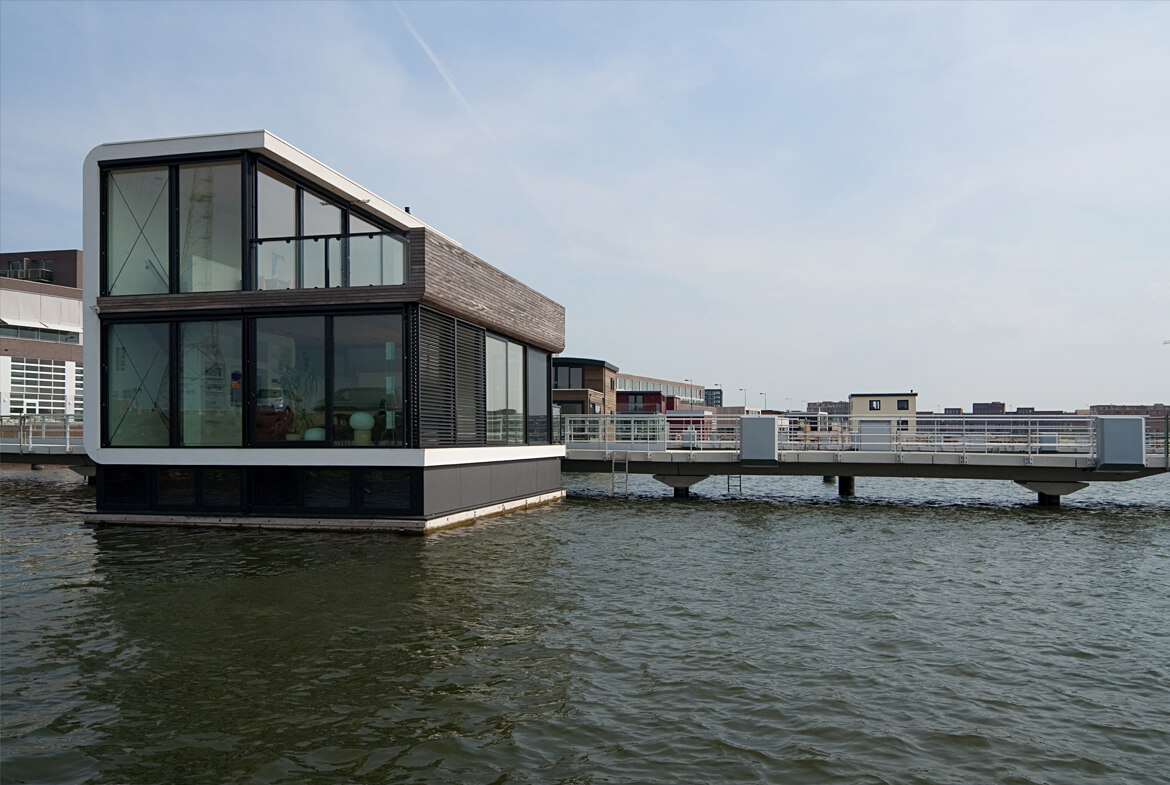
One of the watervillas for IJburg Amsterdam
This watervilla exists of three storeys, of which the lowest is partly under the water level. The roof, wall and ground level floor form a continuous line framing the living area and the open view. This simple yet elegant shape is countered by a second line formed by the first level floor which folds up to form the banister. Together, these two simple lines define a distinct, almost iconic form. The total area of the building is 175 m2
Koen Olthuis’ blog on Discovery Channel’s Next World.
July 23, 2008
The Possibilities and Advantages of Building Floating Constructions
Living on water has attracted a lot of attention the last few years. Coping with fluctuations in water level has become a central theme in spatial developments. This challenge has proven to be a driving force behind the development of water-based architecture.
Living on water, in a nutshell
In Holland people have lived on the water for over 100 years. The first types of water-homes were ships that were transformed into houses. After that people started building houses on concrete boxes — these were the first houseboats. Over the last five years, the modern water villa has become more popular; this construction is equal to/resembles a house you can find on land, but it has a full-fledged stable floating foundation. This foundation has been the base for a completely new spectrum of floating housing typologies with high densities, such as semi-detached houses, urban villas, and terrace houses complete with a garden and road. Technically it is now even possible to make very large floating foundations on which virtually any large-scale developments can take place. Developers in the Netherlands are already including floating apartment complexes or high-rise buildings in their development.
In Dutch newly built living areas, there is hardly enough room to realize the required amount of houses according to the regulations and criteria for water storage. Due to the regulations and criteria for water storage in the Netherlands, there is hardly enough. The new floating foundations and parcels give designers the opportunity to also use the water as a building plot. This allows for a higher density and more space per house, because the building plot is much bigger by also using the water storage areas. The new floating neighborhoods will be dynamic neighborhoods, in both a horizontal as well as a vertical sense.
Check back next week for the second installment of Koen Olthuis’s blog entry.
About this Week’s Guest Blogger:
BIO: ir J.K. Olthuis
Koen Olthuis studied architecture and industrial design at the Delft University of Technology. He is the founder of the Dutch architectural firm Waterstudio.NL that specializes in floating structures to counter concerns of floods, which are both a local concern (one-third of the Netherlands is reclaimed land) and a global one due to the possible effects of climate change. In 2007, he was chosen as No. 122 on the Times Magazine list of “Most Influential People in the World” due to the worldwide interest in water-based developments.
His vision is to change cities worldwide by using water as building ground. Static cities have to change into dynamic cities ready to adapt to floods and fluctuations. The first city in which this work is being built is Dubai, in the United Arab Emirates.
About Waterstudio.NL
Waterstudio develops new architectural and urban typologies, as well as technical solutions in dealing with the problems of dynamic water management and building on water. The development of dwelling and working concepts provides a new notion of the layout of parcels and regions. Moreover, new techniques make new forms of buildings possible. Innovation is the main force behind the firm: Waterstudio has set itself the objective of converting innovative ideas into feasible and broadly applicable building concepts for the upcoming decades. Visit the Waterstudio.nl website.
July 30, 2008
The Possibilities and Advantages of Building Floating Constructions
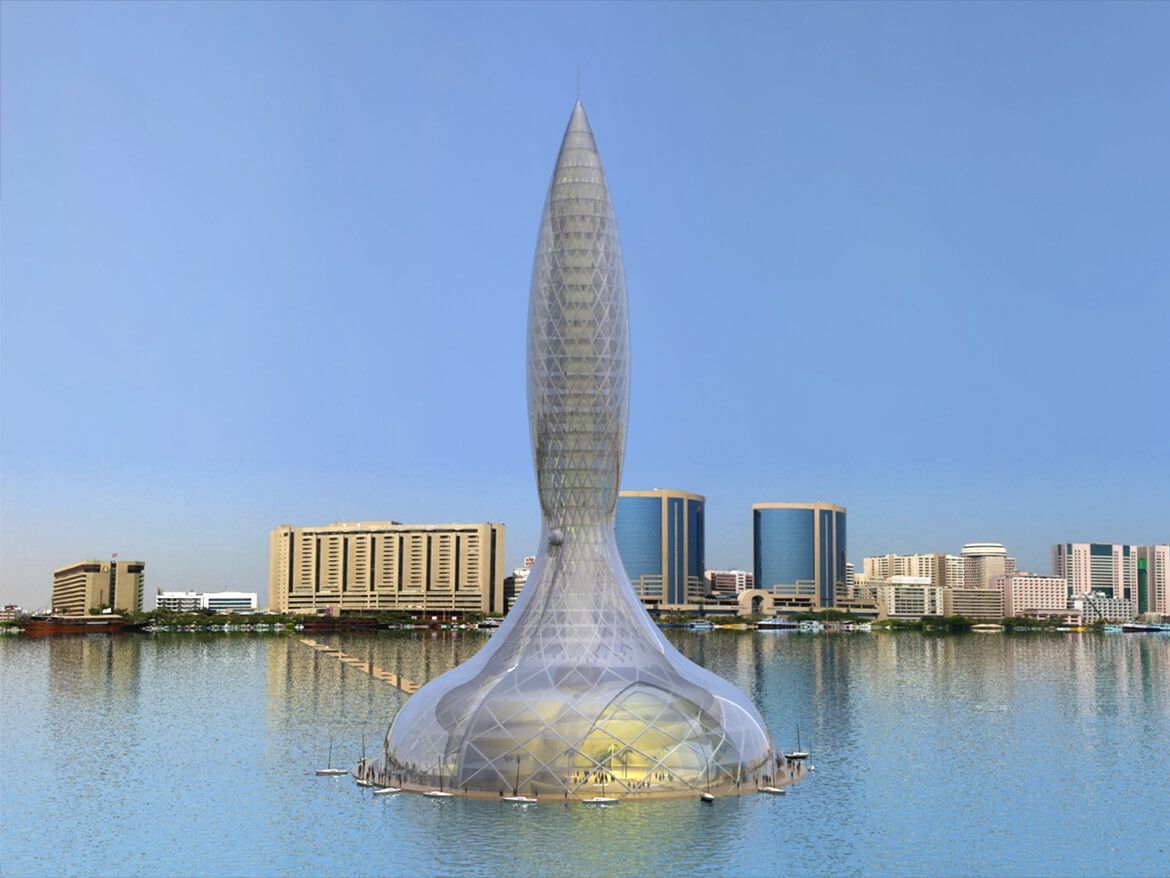
Dynamics in the vertical plane
Water storage is not static. Depending on weather, season or extreme water fluctuations, the storage system will have to accommodate smaller or larger amounts of water. In the vertical plane, the dynamic neighborhood is designed to cope with fluctuations of the water level. These fluctuations are caused by either natural circumstances, such as excess rainfall, or water being deliberately pumped into the watercell from other districts when the water levels are high. The different fluctuations obviously result in their own fluctuation domains. This means that during a rise of 5 centimeters a smaller area will be flooded than during a 50-cm rise of the water level. The frequency of the fluctuation influences the choice of the dwelling. A floating dwelling constantly needs water, whereas a terp dwelling is suitable for a fluctuation of 50 centimeters occurring once every 10 years.
Dynamics in the horizontal plane
Floating constructions also allow functions to be moved. In Delft this already happens in the form of floating terraces, providing additional space for restaurants near the canal side.
During summer these terraces are towed into the city, and then removed after the end of the season. In addition to catering or recreational functions, a mobile floating infrastructure provides space for other common public or temporary functions such as schools, parking facilities, building utilities, sales offices and shops. The use of these functions is dependent on demographics and culturally determined demands and wishes of the users. Experience teaches us that both the cultural as well as the demographic composition of neighborhoods change during decennia. A traditionally built neighborhood on land responds to this by demolition, renovation and restructuring. As a result of the relatively easy possibilities of disconnecting floating constructions from their locations, extra possibilities emerge to cope with both these predictable as well as unpredictable changes in the neighborhood by building on water.
Advantages
During construction the building location can float along with the growing water district. A primary school can be replaced by a high school in case pupil numbers are insufficient, relocating the primary school within the urban configuration. Floating roads can provide temporary access over the water during construction or maintenance in a neighborhood. Shopping malls can either grown and regroup or be moved to new locations. This means an unheard-of flexibility, which would be much more difficult to achieve on land.
Conclusion
Space for water and space for living can be perfectly combined. Because of vertical and horizontal freedom the spatial experience in the water-based neighborhoods will stay dynamic. Terms such as “real estate” and “movable property,” however, will acquire a completely new meaning.
About this Week’s Guest Blogger:
BIO: ir J.K. Olthuis
Koen Olthuis studied architecture and industrial design at the Delft University of Technology. He is the founder of the Dutch architectural firm Waterstudio.NL that specializes in floating structures to counter concerns of floods, which are both a local concern (one-third of the Netherlands is reclaimed land) and a global one due to the possible effects of climate change. In 2007, he was chosen as No. 122 on the Times Magazine list of “Most Influential People in the World” due to the worldwide interest in water-based developments.
His vision is to change cities worldwide by using water as building ground. Static cities have to change into dynamic cities ready to adapt to floods and fluctuations. The first city in which this work is being built is Dubai, in the United Arab Emirates.
About Waterstudio.NL
Waterstudio develops new architectural and urban typologies, as well as technical solutions in dealing with the problems of dynamic water management and building on water. The development of dwelling and working concepts provides a new notion of the layout of parcels and regions. Moreover, new techniques make new forms of buildings possible. Innovation is the main force behind the firm: Waterstudio has set itself the objective of converting innovative ideas into feasible and broadly applicable building concepts for the upcoming decades. Visit the Waterstudio.nl website.
PHOTOS: Waterstudio.NL and Dutch Docklands, Floating and Rotating Tower
Waterstudio.NL and DDI present the Dutch possibilities for building on water to minister Peijs.
Waterstudio.NL and Dutch Docklands International in Dubai
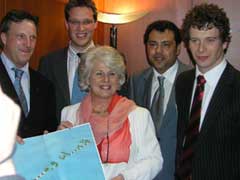
Rolf Peters of Waterstudio.NL (utter right on the photo ) and Paul van de Camp of DDI (utter left on the photo) present the Dutch possibilities for building on water to minister Peijs in Dubai.
In addition to Palm Island and The World, Dubai is developing Palm Jebel Ali. With this palm, which is one and a half times the size of the first Palm, Dubai will write on the water life-sized. The poetic texts are of philosophic nature and are written by the Sheikh.
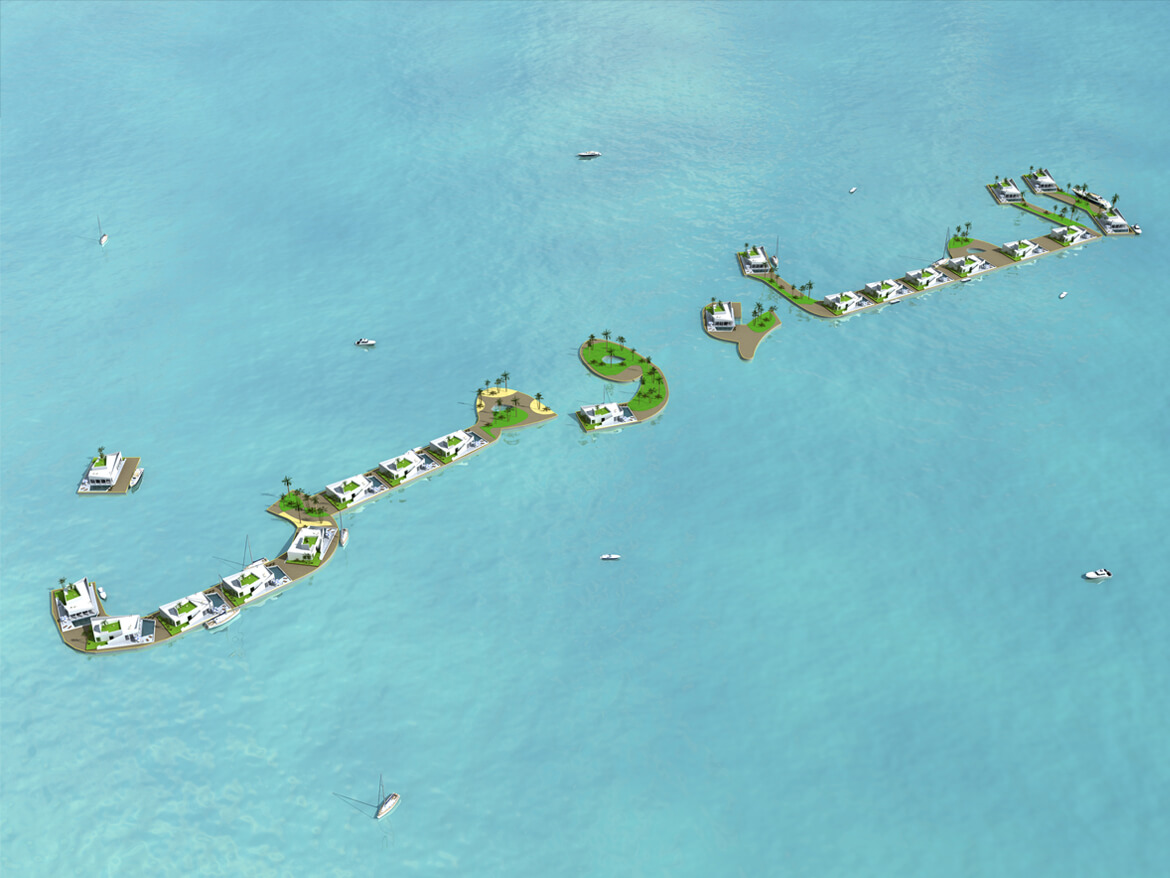
The project will include 80 floating Arabic words with a total surface of 350.000m² of floating building ground, on which 404 houses will be built. The company PalmMarine from Dubai has been asked to present a tender for the realisation and design of this project and called upon the Dutch for their expertise.
Under the supervision of Waterstudio.NL Dutch Docklands International and Royal Haskoning together invented a total package with the complete architecture and innovative solutions. March 14th 2006 the result was offered to Nakheel (the largest developer in Dubai, and owned by the Sheikh) in Dubai.
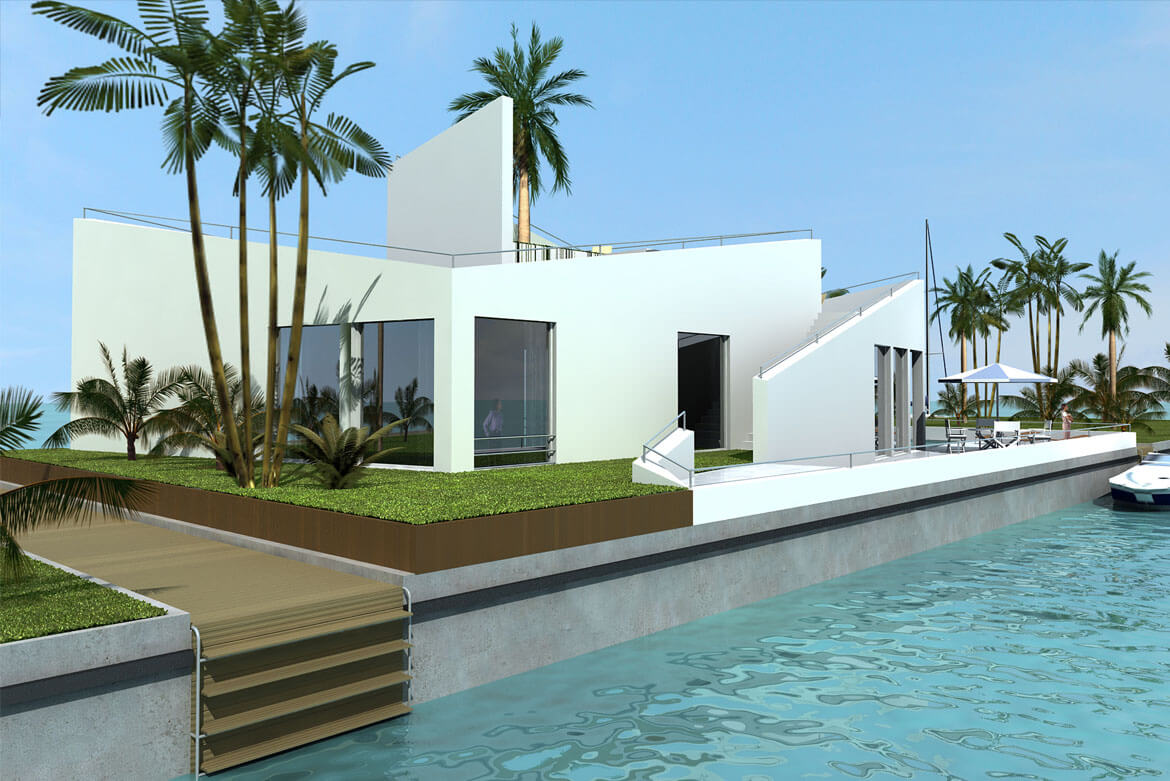
Minister Peijs was also present to morally support the Dutch innovative companies in the field of building on water. As a token of gratitude for her interest in the Dutch architecture and innovations on water, she received a copy of the book containing the designs and technical solutions from Rolf Peters (partner Waterstudio.NL).
PalmMarine, Waterstudio.NL, Royal Haskoning and Dutch Docklands International hope to hear within a couple of weeks whether the tender will be accepted.
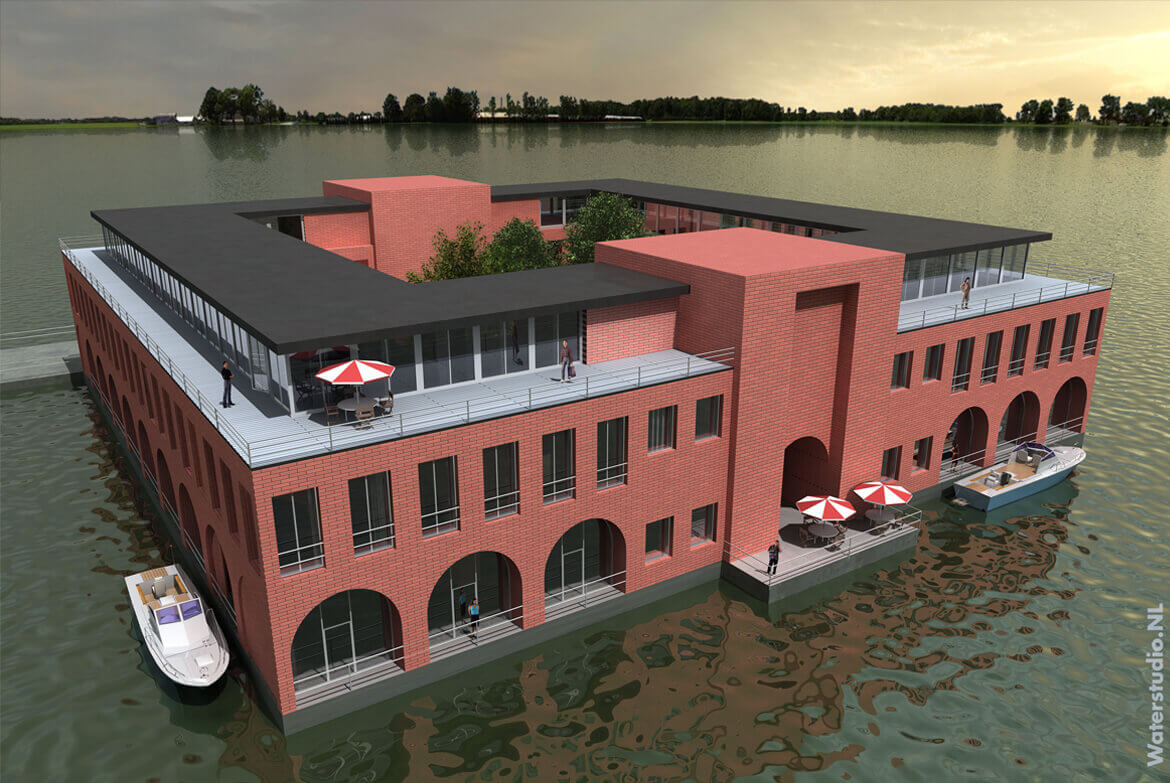
BWT-Krant, Rolf Peters
Architecten komen met waterbestendige woonoplossingen